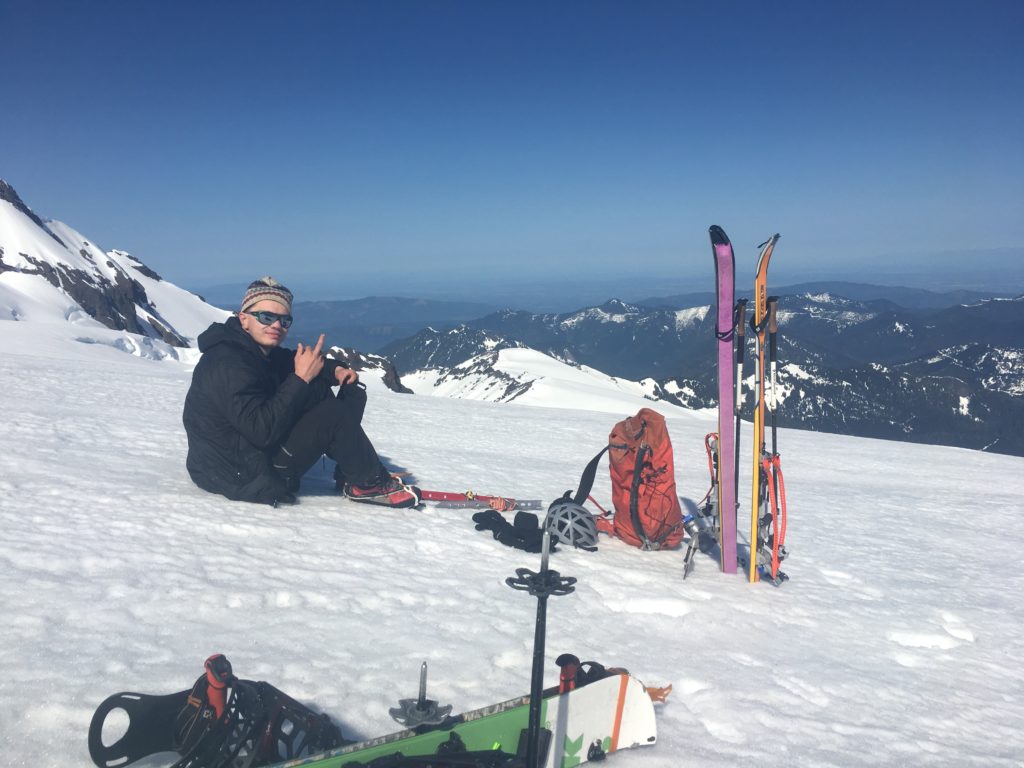It seems like every Marcus-and-Riley Cascades climbing trip starts out with a Highway 20 gut-punch. After the last two years of skiing the 14+ miles of road, it was a relief to pick up Marcus at SeaTac and drive directly to the Eldorado trailhead in just a couple of hours. The day his plane landed the freezing level dropped well below the beginning of the NW Ice Couloir on Eldorado, the route we attempted last year. Like every Cascades venture, it sounded like a good plan.
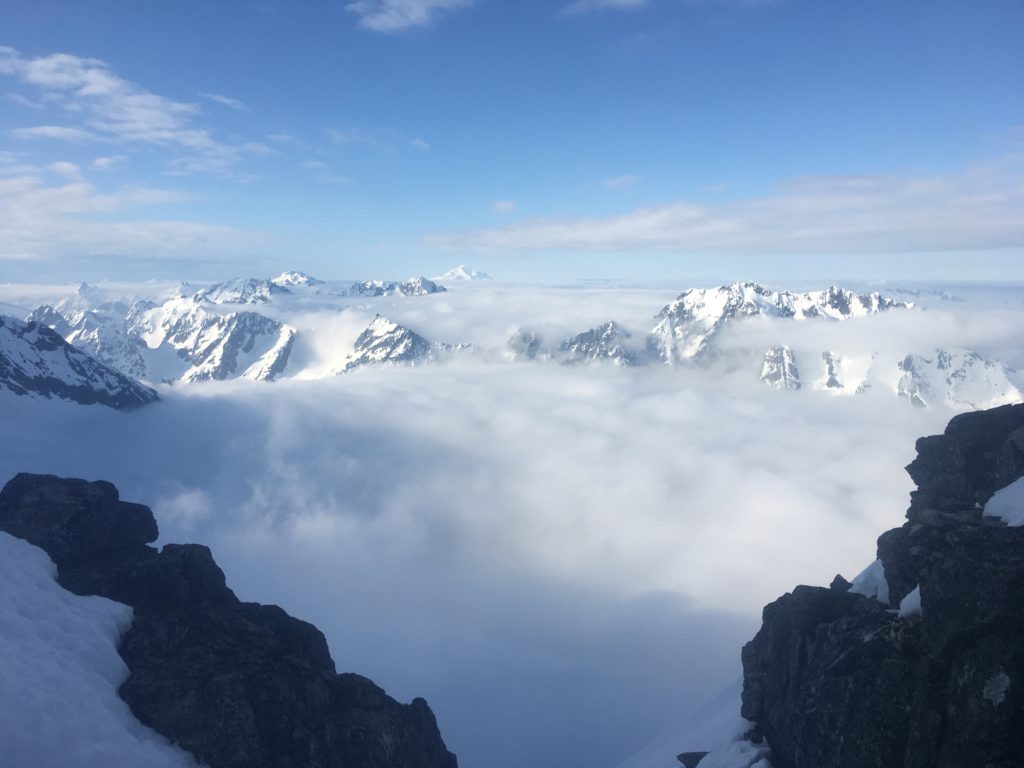
It wasn’t. While we did punch all the way up past the boulder field after a 6:00 PM trailhead arrival — our new high point — it started raining, and then sleeting, and then raining again. At 11:00 PM we succumbed to the unforecasted sucker punch and set up the bivy tent. Less than twelve hours into the trip and we were thoroughly soaked and beaten. At this point though, this feeling wasn’t so much crushing as it was just plain familiar. “Whelp, been here before.” We descended to the laundromat in Concrete the next morning to scheme the next objective.
Let me be clear: Eldorado is not a hard climb. In fact, it’s pretty much non-technical. Several parties skied it in a day before our attempt. Our experiences have been a heady combo of foolishness and bad conditions, and I’d like to think that we’ve been learning more each time. After all, it seems like each year we implode on the easy climb and then cruise something much more committing and technically demanding.
In typical Cascades fashion we struggled a bit to catch things in good condition, but we had a couple of successes. One of those was the Coleman Headwall on Mt. Baker. A little more sustained and threatened than the oft-climbed North Ridge, the Coleman Headwall hangs guard over the whole North side of the the mountain and most of the approach. Late in the season it’s a near-vertical nightmare of rockfall, hanging seracs, and gaping bergschrunds, but on a cold day in May with the bulk of winter’s blanket yet to be melted away it’s pretty climbable. At around 2000’, the headwall is certainly sustained neve front-pointing but it’s never greater than vertical.
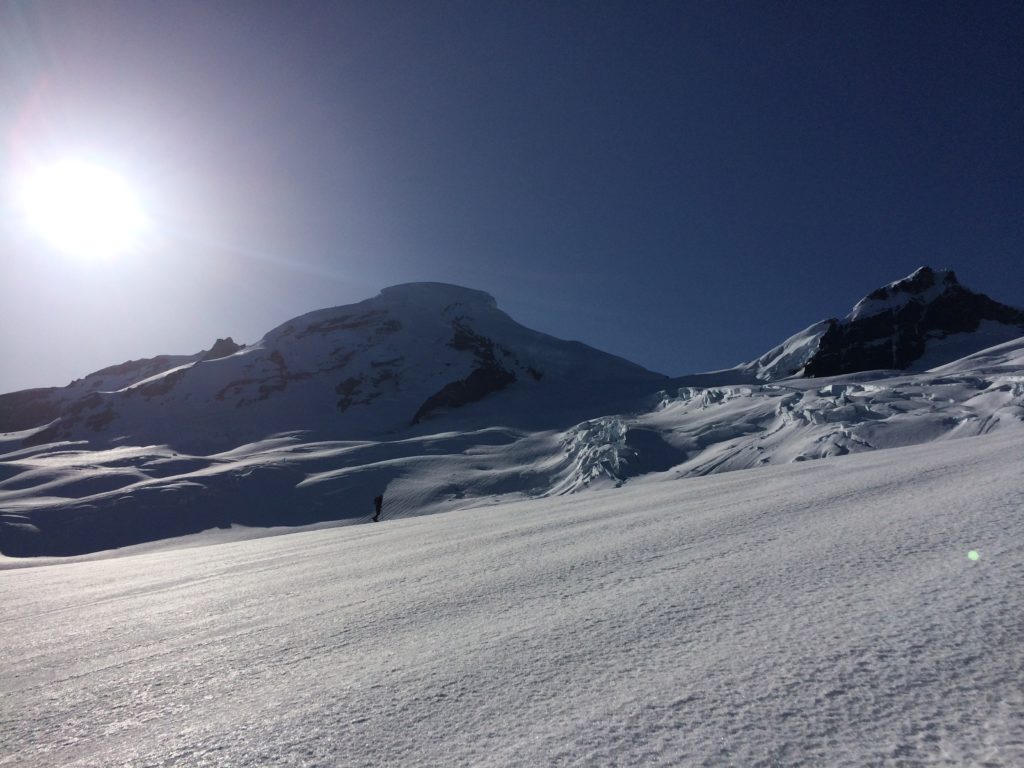
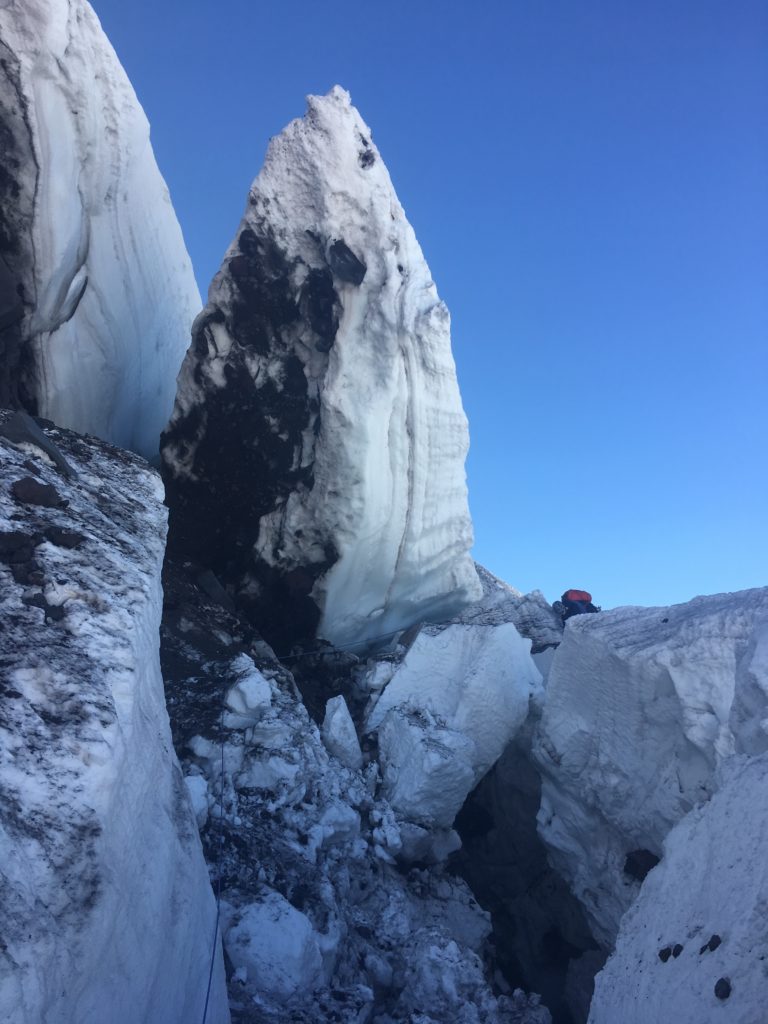
Early season Baker climbing means road-skiing, but even with the added few miles we popped up above treeline making good time and with splitter skies ahead of us. The Coleman glacier can be time consuming to navigate, but this time of year we gambled on a high traverse in to the base of the headwall, and it paid off. We were roped up and simul-climbing fast through the lower section of the headwall, which has some overhead serac hazard. Through that, we breathed a bit before swapping leads and smashing out the rest of the wall in two more blocks.
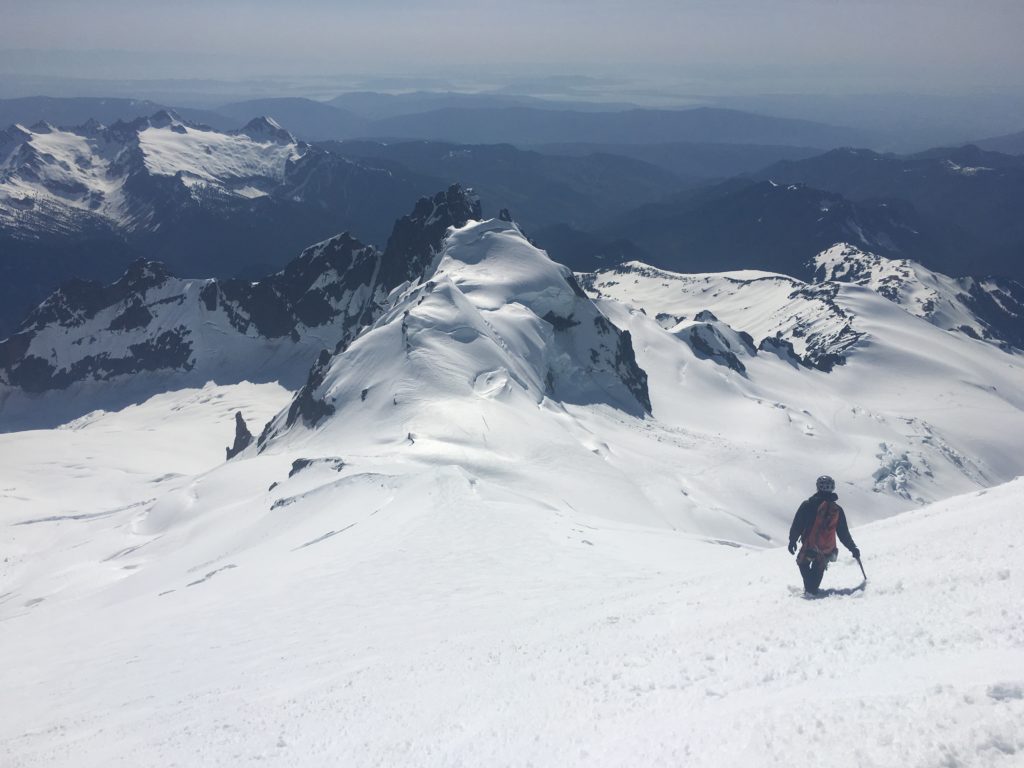
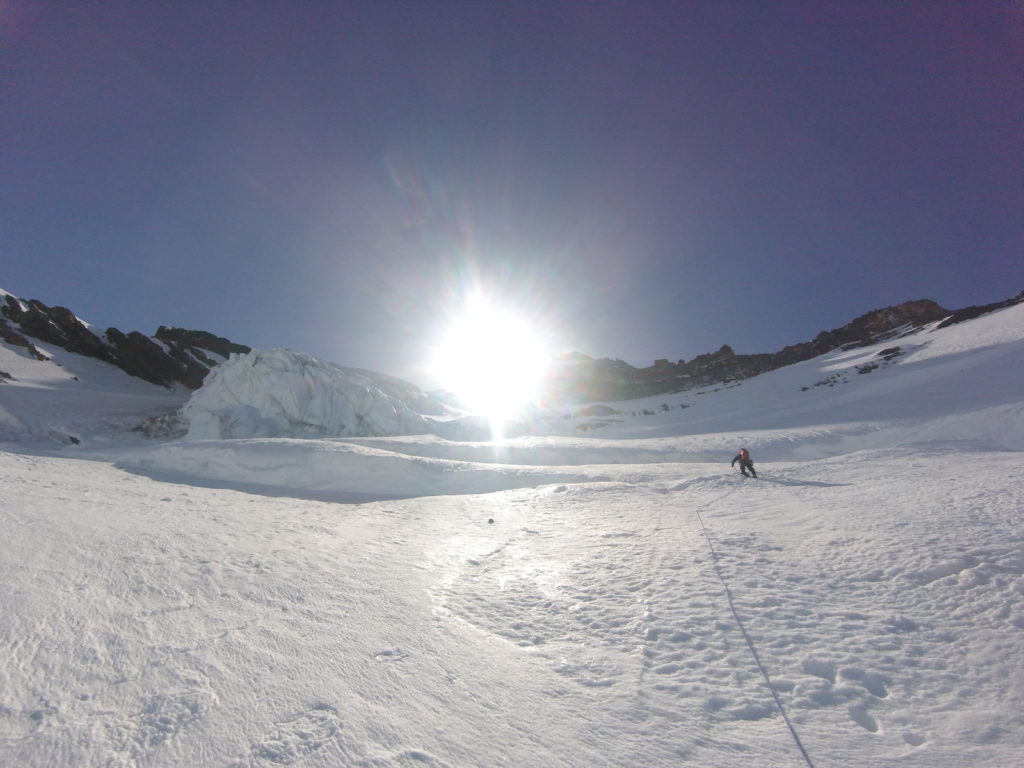
Like catching any alpine climb in excellent shape, it felt a little easier than it’s reputation and I sat on the summit hungry and vaguely dissatisfied — time to go bigger. We cached our skis at headwall-elevation on the Coleman-Deming route and had a wicked good ski all the way back below treeline, which changed this mood a bit.
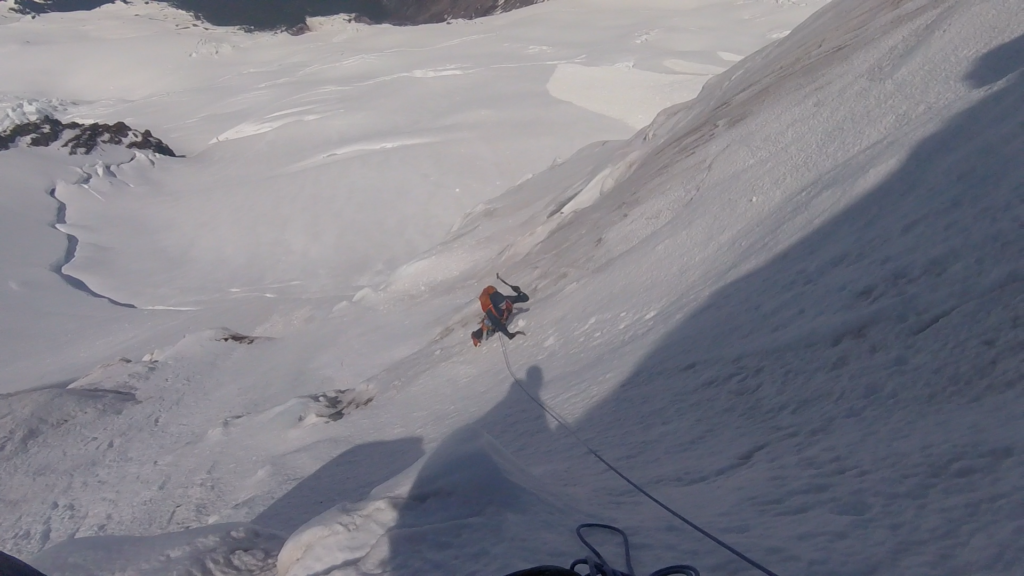
The North Ridge of Mount Stuart is one of Washington’s all-time classic alpine routes. Stuart is the Big Daddy of the Enchantments, and the North Ridge cherry picks the best climbing out of the most striking ridge line. The typical Upper North Ridge route is only climbed in later summer and traverses in from the Stuart Glacier, cutting off most of the true North Ridge. One can start at the base for the Complete North Ridge — 3000’ of 5th class rock climbing, with two distinct crux Gendarmes that go at around 5.9.
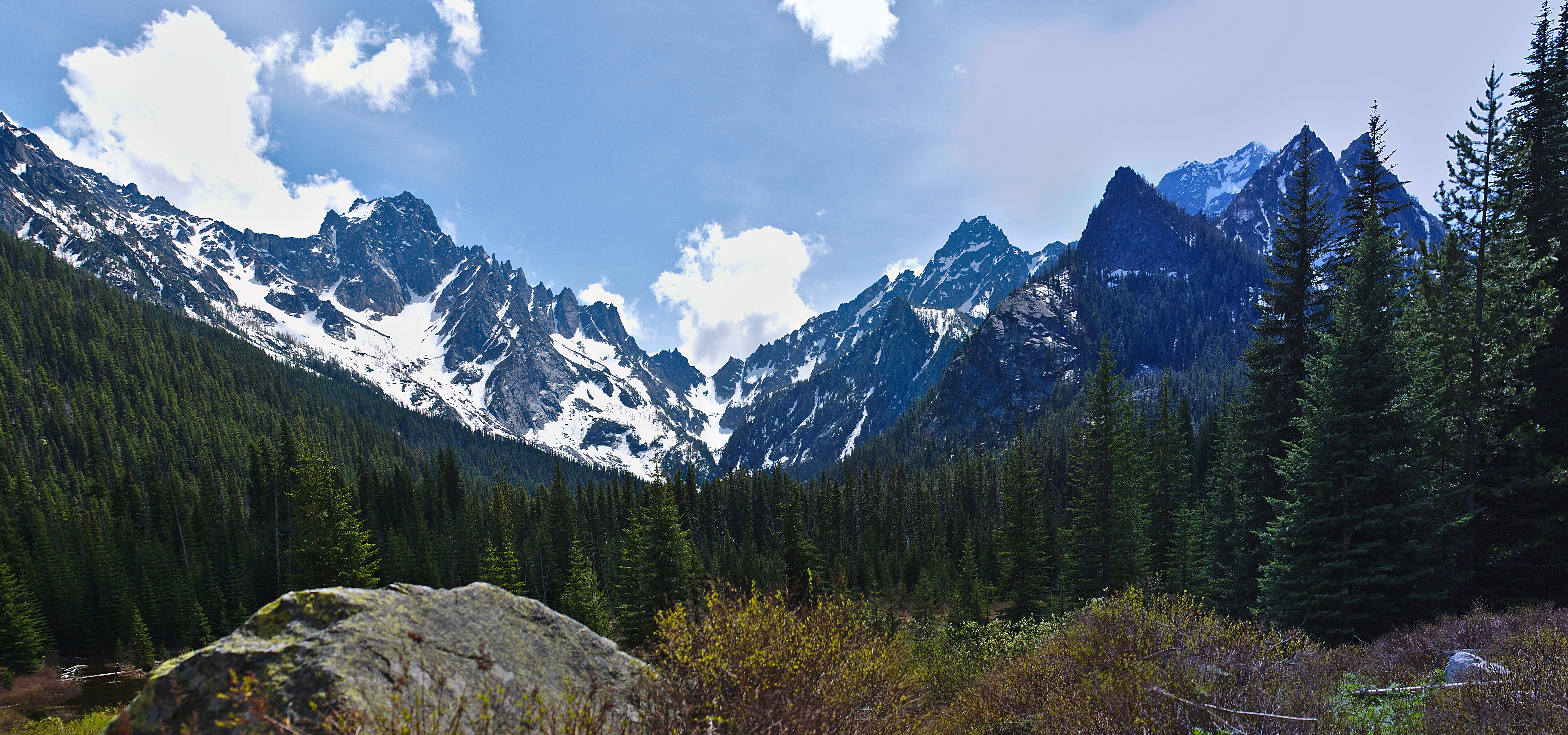
But that’s in July. In May, things are different: the approach is rough, there is significant snow on the route, and much of the rock is running with water. In order to climb 3000’ of 5th class rock with a single day’s worth of sunlight, you can’t really pitch things out, and simul-climbing snowy, wet rock is tough. To set ourselves up the best, we bivvied at the base and climbed the route base-base, starting at 3:00 AM and not getting back down for 18 more hours of continuous climbing movement.
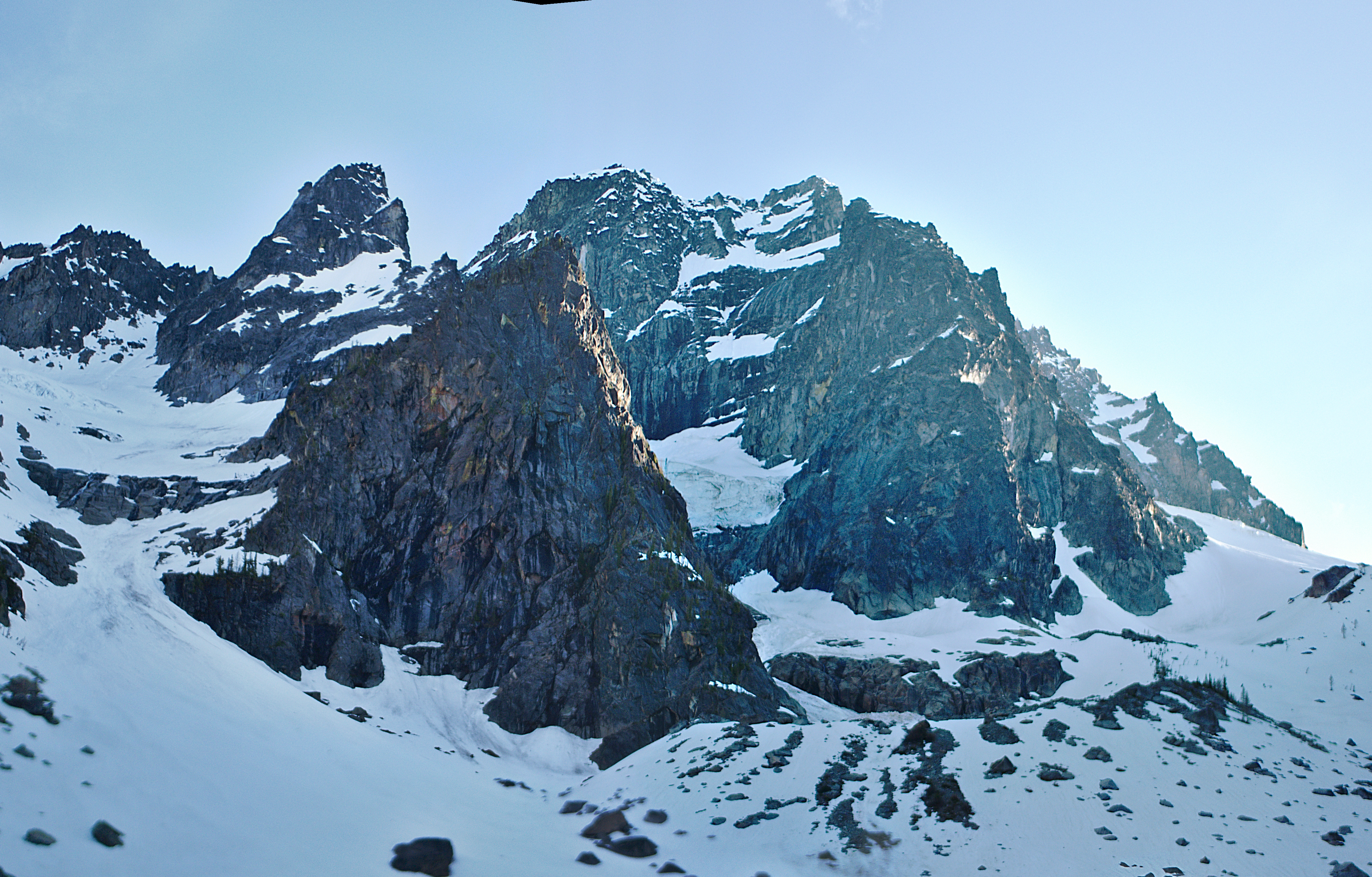
Our media production en route was a little skimpy considering the unrelenting nature of simul-climbing and the background stressor of being benighted on a 3000’ wall. We soloed to the base of the first Gendarme, which I pitched out in two pitches. We then simul-climbed all the way to the base of the Upper North Ridge.
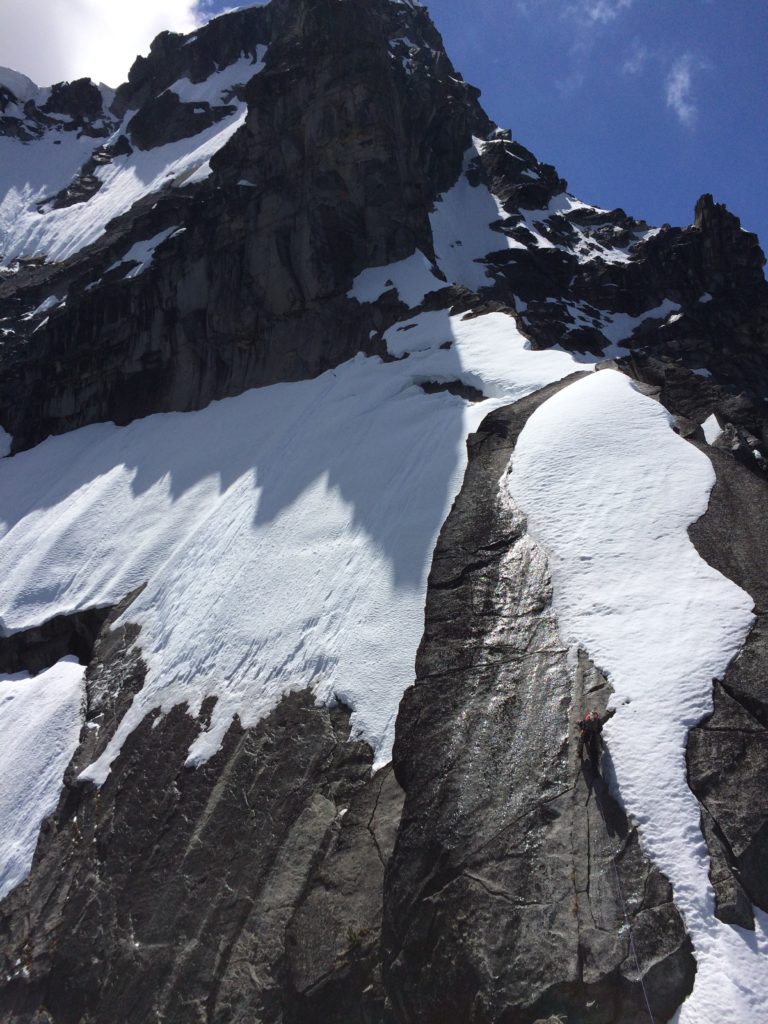
Characterized by knife-edge granite fins and slabs, the Upper North Ridge really is the ultra classic it’s reputed to be. It’s also lots harder when covered in snow, and massive wet slides booming down the slopes on either side of the ridge added some chili-pepper to the whole experience. The 5.5 friction slab pitch, which has shut down many Upper North Ridge climbs when covered with snow, looked pretty bad from afar but turned out to be climbable — if very wet. Marcus led the upper Gendarme crux pitches in impeccable style at the end of a long day, after which we were forced into a rappel to get through a tricky section of steep snow for the final wander to the summit.
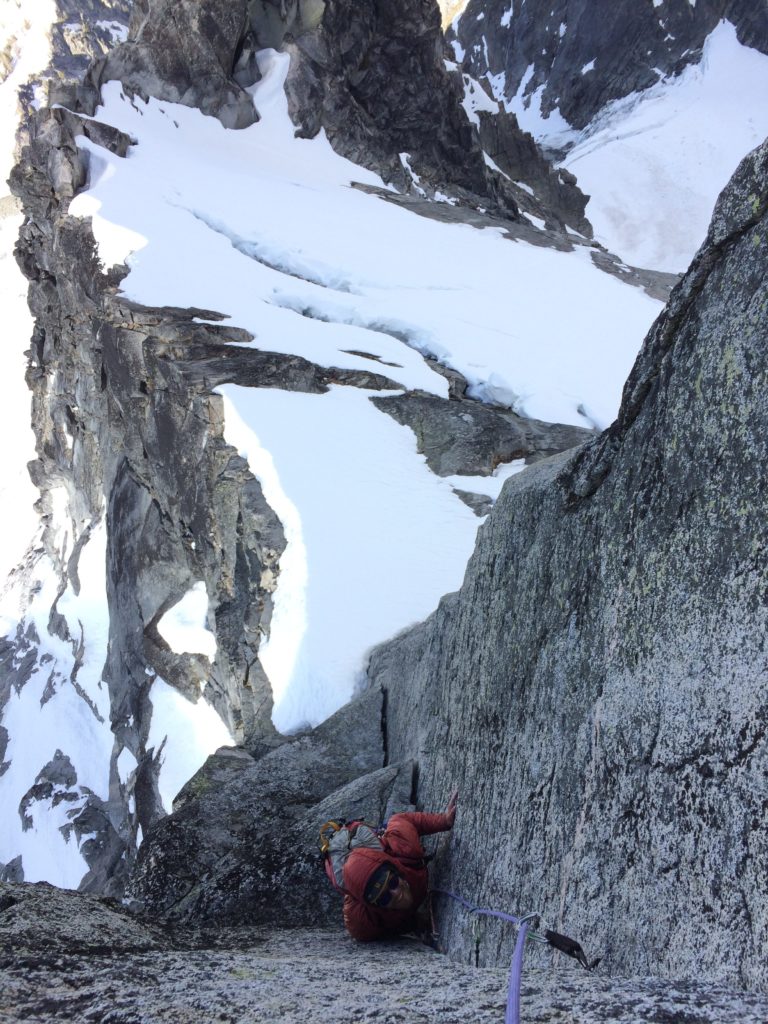
Fatigue and a spectacular, bloody sunset slowed our descent but we eventually found the entrance into the Sherpa Glacier Couloir. After an uneventful ‘schrund crossing we glissaded back to our home on a flat rock with no food or water. We had planned to climb and then head back to the car in the same day, but getting back to our bivy in the dark after 18 hours of climbing made the prospect of hungry sleep better than five or so more hours of post-holing.
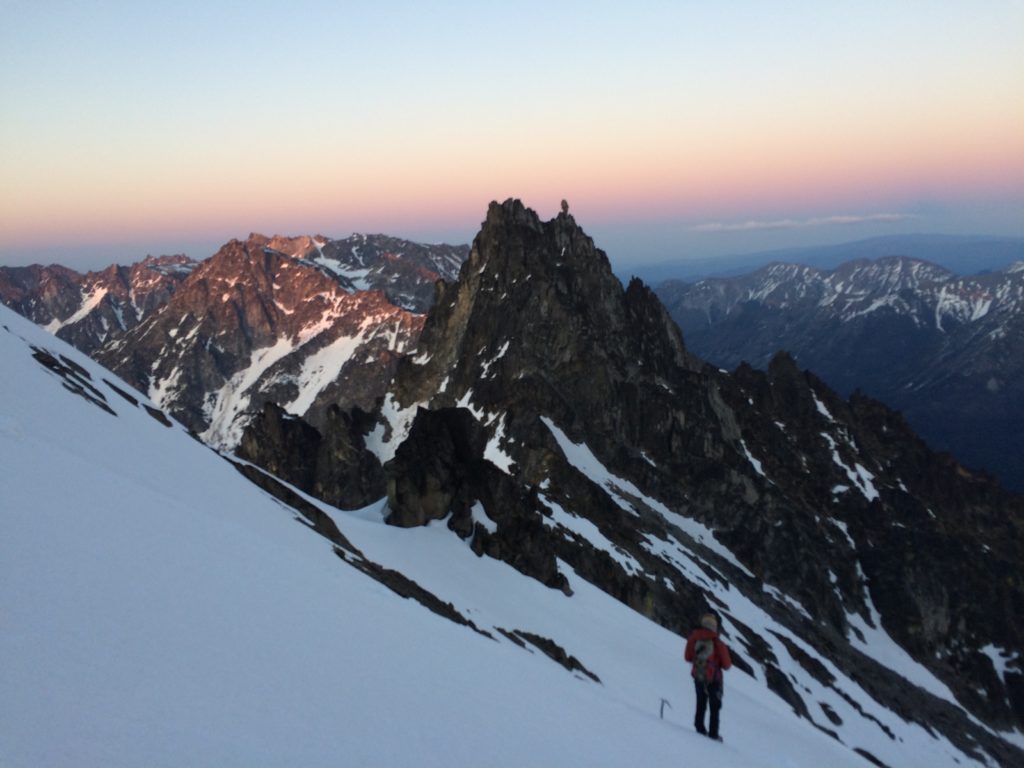
The Complete North Ridge has been climbed in winter only twice — the last time by superalpinist Colin Haley — and I think for both of us this climb was our way to flirt with a winter ascent. Lying on our rock soaked, hungry, and totally torched we both agreed in that moment: “Fuck that. No way.” But now, writing this… you never know, maybe next year.
